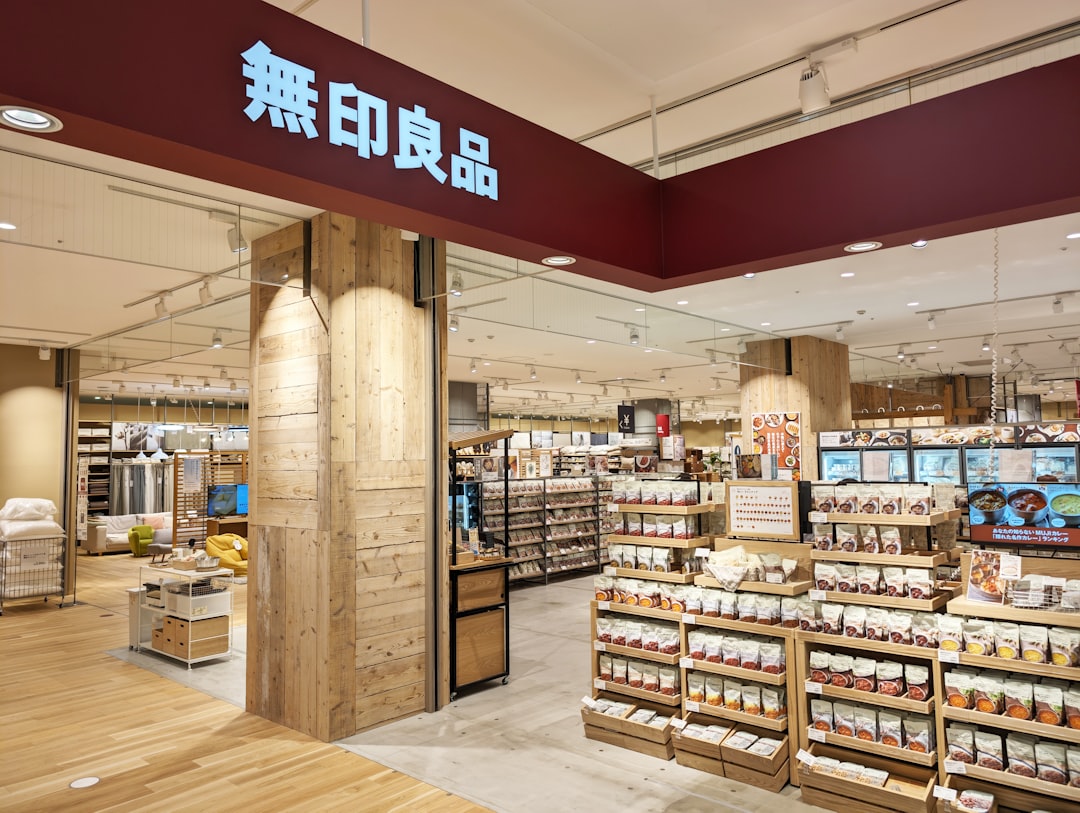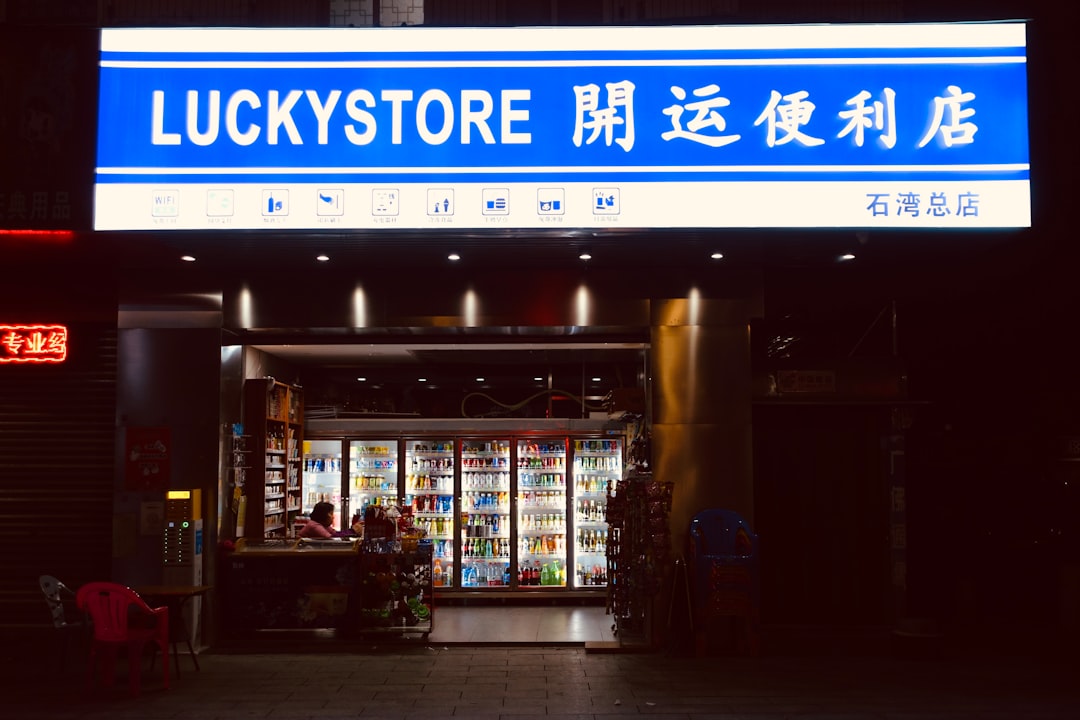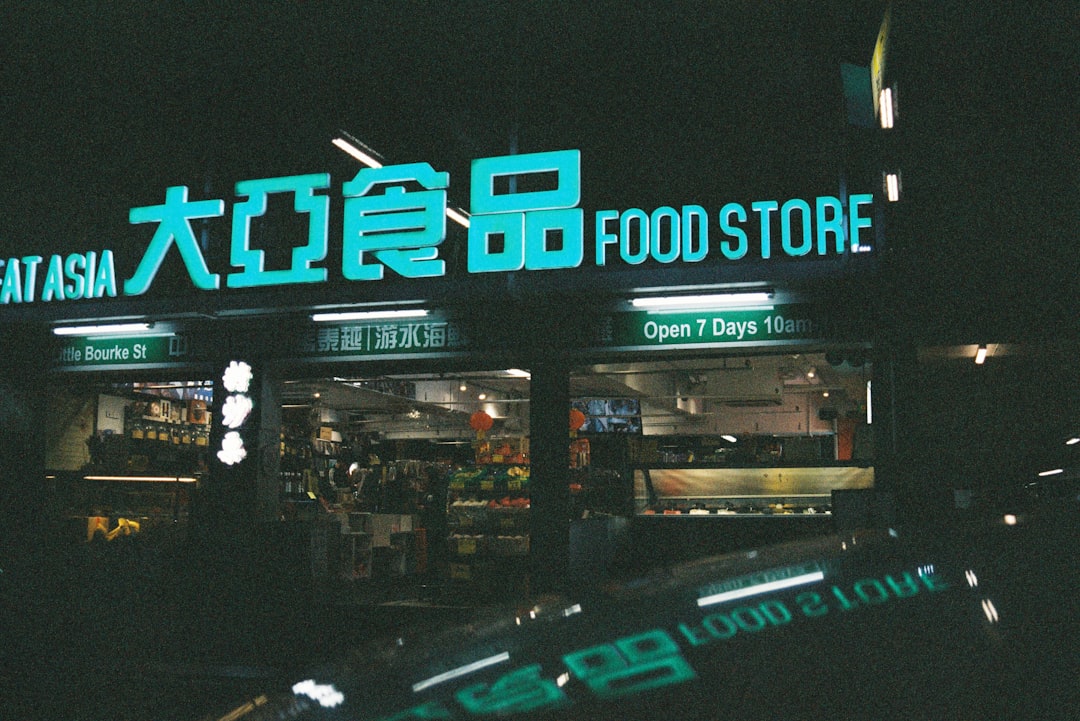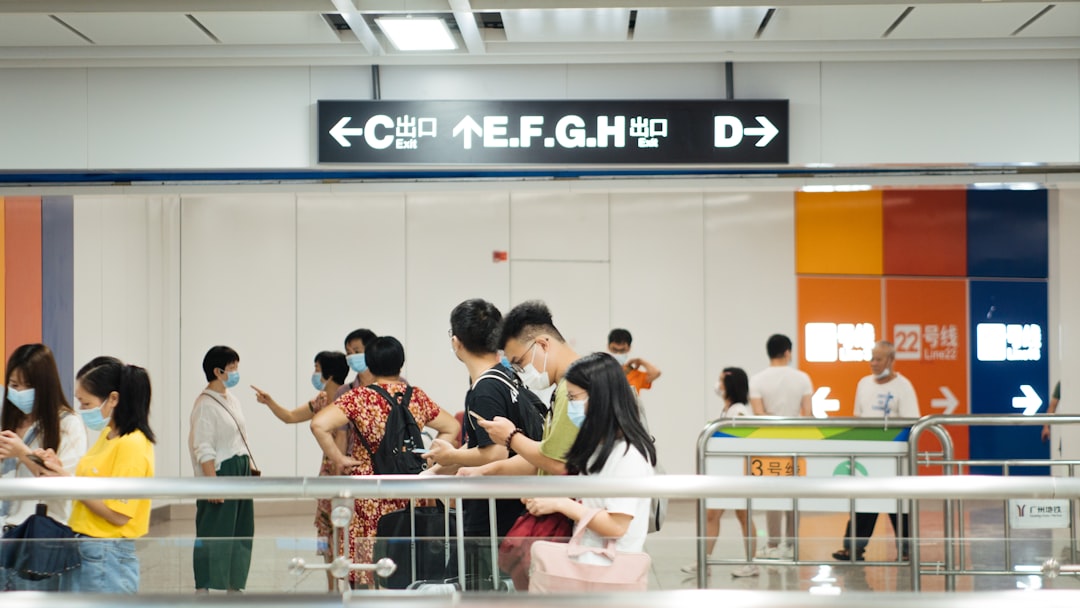

Engage prospects with a scan and streamline customer engagement with FREE QR code marketing tools by Sona – no strings attached!
Create a Free QR CodeFree consultation

No commitment

Engage prospects with a scan and streamline customer engagement with FREE QR code marketing tools by Sona – no strings attached!
Create a Free QR CodeFree consultation

No commitment
Variety stores have become pillars of affordability and product diversity in communities worldwide. As consumer habits shift and digital expectations rise, these businesses face growing challenges turning everyday foot traffic into meaningful, traceable engagement. Many high-value prospects come and go anonymously, which means stores miss opportunities to build loyalty, encourage return visits, and attribute which in-store moments actually drive revenue.
Retailers now feel increasing pressure to modernize customer touchpoints while preserving their eclectic charm. The gap between offline action and online data has become glaringly clear. Investing in seamless experiences is now essential for staying relevant, with customers expecting instant coupon access, quick sign-ups, and mobile-friendly information. Stores that rely only on manual processes or paper promotions risk falling behind, especially when competitors are using QR codes in retail to capture and activate demand.
With thoughtful QR code strategies, variety stores can convert fleeting in-person interactions into lasting, measurable relationships. This guide explores how integrating QR codes at critical customer touchpoints addresses core retail challenges and offers actionable steps for elevating both shopper engagement and business outcomes. Used well, QR codes become the thread that connects displays, print assets, packaging, receipts, and signage into a single connected customer journey supported by real data.

Variety stores often depend on analog touchpoints such as printed flyers, receipt coupons, and static shelf tags. These assets are hard to measure and easy to overlook, even when they capture attention in the moment. A frequent challenge is seeing shoppers pick up a flyer or pause at a display, only to never join a loyalty program or digital list because the next step requires a long paper form or a website typed into a phone keyboard. This breaks the chain between in-store attention and future revenue opportunities.
Modern QR codes placed at strategic locations transform these analog bottlenecks into digital gateways. A scan can open a simple form, such as Google Forms, load a mobile wallet coupon, trigger a save-to-phone offer, or start a sign-up flow that takes less than 30 seconds. The store immediately captures attribution, contact details, and intent signals, while minimizing manual errors and time-intensive staff involvement. With a mobile-first approach, every in-store moment can become a measurable digital conversion.
Dynamic QR codes on shelf talkers, peg hooks, or bulk bins can provide instant access to exclusive deals, care guides, or short product videos. Shoppers can act quickly in the aisle while the store captures scan-level context, reducing wasted impressions and ensuring that every interested visitor can be nurtured toward a repeat visit or a larger basket.

Today’s retail landscape is crowded and competitive, with variety stores operating on tight budgets and quick turns. One of the biggest pain points is the inability to track who engages with print materials, which displays actually drive action, and which promotions contribute to incremental sales. Without visibility from scan to conversion, marketing dollars are often wasted, and high-value prospects remain untracked after they leave the store.
QR codes in marketing address this challenge by connecting offline interest to online touchpoints instantly. Each scan can capture time, location, device type, and campaign source, enabling real-time optimization and more precise targeting. With dynamic content, you can update promos without reprinting and build segments from actual behavior instead of guesses.
For example, adding a QR coupon to receipts allows stores to test multiple offers by location and daypart. Over a few weeks, you will see which discounts drive return visits and larger baskets. Staff can then double down on the top-performing offer at the register and reduce time spent pushing promotions that underperform.
Variety stores often have fragmented customer data that makes personalization difficult. The right QR code formats can close data gaps by creating quick, standardized ways to capture contact information, trigger actions, and connect customers to content that guides a purchase. Choosing formats based on the desired behavior ensures that every scan has a clear path to value.
Dynamic formats are especially important in retail environments where promotions and inventory change frequently. They allow your team to rotate offers, replace out-of-stock items, and adjust messaging without reprinting signage. This flexibility keeps your campaigns accurate, up to date, and profitable.
Dynamic QR formats that integrate with CRM and marketing tools ensure each scan enriches customer profiles and supports future campaigns. With Sona QR, you can manage multiple formats, update destinations as promotions change, and feed scan events into Sona, an AI-powered marketing platform for identity and attribution, or your CRM for attribution and retargeting.

Missed opportunities often occur when shoppers interact with displays, packaging, or flyers but do not have an easy next step. Strategic QR placement in high-attention locations captures those moments and turns them into measurable engagement. Think of QR codes as a bridge; they should be positioned where shoppers naturally look and where the value exchange is obvious.
Review your store layout to identify moments of discovery, decision, and checkout. Match QR use cases to these contexts. In discovery zones like new arrival endcaps, showcase videos or quick feature comparisons. At decision points like shelves with similar items, link to reviews, sizing guides, or savings calculations. At checkout, drive loyalty enrollments or instant offers that encourage a return visit.
For example, placing a dynamic QR code on endcaps featuring seasonal goods allows you to test two different offers week by week. Scan data tells you which incentive drives more in-aisle conversions. You can swap the destination without reprinting and roll out the winning version across stores for the rest of the season.

QR codes shine when they map cleanly to specific shopper actions. Focus on use cases that reduce friction, increase convenience, and make in-store discovery more informative. The best use cases also contribute to your first-party data strategy and support ongoing communication with customers.
These applications improve the customer experience and ensure key engagement data is integrated into overall marketing efforts. By standardizing a few core patterns, your teams can deploy QR campaigns quickly, measure results, and scale what works.
When you pair these use cases with dynamic QR codes and well-designed landing pages, you gain a reliable system for capturing demand at the point of interest and nurturing it into loyalty.
A common challenge for variety stores is the lack of segmented audiences. Without tags that capture what shoppers scanned and where they did it, most follow-ups are generic. Advanced QR strategies solve this by tagging every scan with journey stage, intent, and context, then feeding those tags to your CRM and ad platforms for tailored follow-up.
The result is a smarter retargeting engine, powered by intent-driven retargeting. Instead of blasting the same coupon to everyone, you can send back-in-stock alerts to those who scanned new arrivals, bundle offers to those who scanned accessories, or a thank-you discount to those who scanned a loyalty QR at checkout.
For variety stores, segment distinctions often include deal hunters vs. brand loyalists, home goods vs. personal care shoppers, and seasonal decorators vs. everyday essentials buyers. Sona QR makes it straightforward to set up codes with tags and send scan events to Sona.com, which ties those signals to later purchases for closed-loop attribution.
Fragmented campaigns produce inconsistent messaging and wasted spend. QR codes act as connectors across channels, allowing marketers to link offline moments to digital follow-ups with a single scan. When combined with coordinated creative and offers, they help deliver a consistent story that carries from discovery to purchase and beyond. Learn how to combine QR codes and online stores for stronger campaigns.
Think of each media type as a distribution channel for your digital experiences. The QR code is the switch that turns static media into interactive, measurable assets. Maintain consistent branding and value propositions, then tailor the call to action based on context, such as Scan to enter tonight or Scan to see what is in stock now.
QR codes serve as the offline onramp to your digital marketing engine. A centralized platform such as Sona QR enables you to manage all codes, monitor performance by channel, and sync scan data to your CRM and ad platforms. This integration turns every scan into a structured data point that supports smarter optimization.
Running QR campaigns in silos leads to scattered data and missed opportunities. A consistent operating model helps teams plan, deploy, and improve QR experiences that ladder up to real business results. Begin by aligning on the use case, then select the right QR type and placement, and finally measure what happens after the scan.
The following steps translate strategy into execution. Use them across all stores and campaigns so every team member understands how to deliver measurable outcomes, not just attractive signs.
By following these steps, your team can turn QR experiments into a repeatable growth engine. A short post-mortem after each campaign captures learnings and helps you improve speed, consistency, and ROI over time.

Without granular insight into which materials drive results, it is difficult to justify budgets or scale what works. Modern tracking connects the dots from scan to action, then to repeat visits and revenue. When this data flows into your CRM and ad platforms, you can personalize follow-ups and invest in the channels and placements that actually produce outcomes.
The goal is not only to count scans but to understand the buyer journey. You need to know whether a scan led to a form fill, a coupon redemption, a return visit, or a purchase. With identity resolution and multi-touch attribution, you can connect anonymous scans to known customers and see how QR engagement contributes to pipeline and closed revenue.
Sona QR captures real-world engagement with robust analytics and easy-to-manage dynamic links. Sona.com extends this capability by connecting scan data to known identities, unifying touchpoints across buying stages, and attributing revenue. Together they help you operationalize QR codes as a performance channel rather than a tactical experiment.
Even well-designed QR codes can underperform if data capture is inconsistent or staff are not aligned. Build habits that standardize your approach, educate your team, and automate follow-up so that every scan drives meaningful outcomes. Small process improvements lead to large gains over time.
Choose the practices that match your store layout, media mix, and customer base. For a variety store, the most impactful improvements usually involve better attribution at the shelf, streamlined sign-ups at checkout, and creative campaigns that make scanning fun.
A practical example: place a QR code on loyalty cards that lets shoppers check point balances and claim a personalized offer. Another example: add a QR to layaway or special order forms so customers can track status updates. These small touches turn static materials into dynamic services that set your store apart.
QR codes empower variety stores to overcome the limits of traditional print promotions and static signage. With a thoughtful strategy, every shelf talker, flyer, receipt, and window becomes a digital entry point that captures interest and turns it into measurable action. The value compounds as scan data flows into your CRM, enabling more relevant offers, better attribution, and smarter investment decisions.
Integrating QR codes into everyday operations is a strategic move that addresses engagement blind spots, data gaps, and inconsistent customer journeys. By embedding digital touchpoints across the retail environment, stores can align in-person moments with actionable business intelligence. With tools like Sona QR for code management and Sona.com for attribution, variety stores can connect the dots from scan to revenue, build deeper relationships, and create the connected experiences shoppers expect. Start creating QR codes for free.
QR codes have revolutionized variety stores by transforming traditional shopping into an interactive, data-driven experience that boosts customer engagement and drives sales. Whether it’s attracting new shoppers, enhancing in-store experiences, or providing instant product information, QR codes empower variety stores to connect with customers in meaningful ways that translate into measurable growth. Imagine instantly knowing which promotions spark the most interest and being able to adapt your campaigns on the fly to maximize impact.
With Sona QR, variety stores gain the advantage of dynamic, trackable QR codes that can be updated anytime without the need to reprint materials. This means every scan is a powerful touchpoint linked directly to customer behavior and revenue, enabling smarter marketing decisions and higher returns. Start for free with Sona QR today and turn every scan in your variety store into an opportunity for deeper engagement and increased sales.
Variety stores focus on affordability and product diversity with eclectic charm, whereas department stores often have larger scale and more segmented departments.
Variety stores offer a wide range of products including seasonal goods, home essentials, personal care items, craft supplies, and more, often curated for local community needs.
By integrating QR codes at key touchpoints such as flyers, shelf tags, and receipts, variety stores can convert in-store interest into measurable digital interactions that build loyalty and encourage return visits.
QR codes should be placed in high-traffic zones like checkout lanes, endcaps, clearance racks, new arrival displays, window displays, and community boards at eye level with clear calls to action.
QR codes connect offline actions to online data by capturing scan details like time, location, and device, enabling real-time offer updates, targeted marketing, and detailed conversion tracking.
Use cases include digital coupon distribution, product information access, loyalty program enrollment, post-purchase care, and collecting customer feedback or reviews.
By tagging QR code scans with journey stage, intent, and context, stores can feed this data into CRMs and ad platforms for personalized retargeting and smarter follow-up campaigns.
Stores use platforms like Sona QR to monitor scan data including location, time, and conversion behavior, allowing them to optimize campaigns based on real-time analytics and attribution.
Stores should define clear goals, choose the right QR code type, design and test the code with strong calls to action, deploy codes in strategic locations, and continuously track and optimize performance.
By training staff to promote QR codes and explain their benefits quickly, stores can increase scan rates and build customer excitement through creative activations and gamified experiences.
You can locate nearby variety stores by searching local business directories, using map apps, or visiting community boards where stores often advertise their presence.
Check online review platforms, social media, and store websites where customer feedback is posted to identify variety stores with high ratings and positive experiences.
Dynamic QR codes allow stores to update destinations without reprinting, track detailed analytics, run A/B tests, and respond quickly to inventory or promotion changes.
Use Sona QR's trackable codes to improve customer acquisition and engagement today.
Create Your FREE Trackable QR Code in SecondsJoin results-focused teams combining Sona Platform automation with advanced Google Ads strategies to scale lead generation

Connect your existing CRM

Free Account Enrichment

No setup fees
No commitment required

Free consultation

Get a custom Google Ads roadmap for your business






Launch campaigns that generate qualified leads in 30 days or less.
